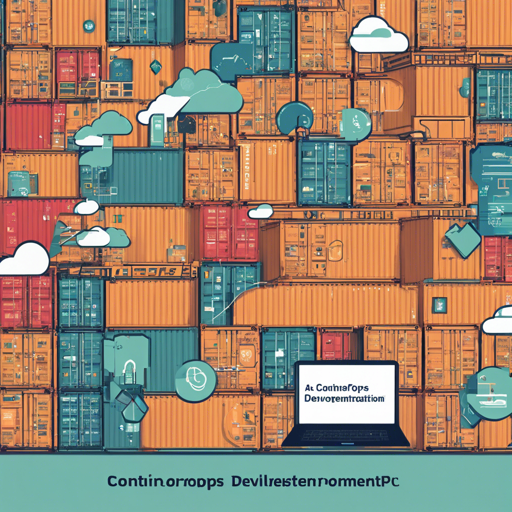In the fast-paced world of software development, the ability to harmonize various tools and processes is pivotal. Enter DevOps orchestration—a method that seeks to marry these disparate components into a cohesive working unit. This article will guide you through the intricacies of ContainerOps, a platform that embodies these principles. We’ll cover the rationale behind DevOps orchestration, how to implement it, and provide troubleshooting advice along the way.
Why DevOps Orchestration?
In a single workflow, developers often juggle numerous tools and services. The challenge? No single tool can manage all DevOps tasks comprehensively. Transitioning between these tools can lead to wasted resources and duplicated efforts. So how do we accelerate the DevOps process? The answer lies in DevOps orchestration.
- Seamless Integration: Keep your process intact while assembling various components into an orchestration engine.
- Gradual Improvements: Enhance your DevOps processes step-by-step, avoiding disruptive changes that might lead to setbacks.
How to Implement DevOps Orchestration?
Combining different DevOps services, tools, and plugins to establish orchestration can be quite complex. Here are some strategies to tackle the key challenges:
- Deliver consistent data between jobs.
- Ensure environment consistency for all services and tools used.
ContainerOps vs. Jenkins
The race for a superior DevOps orchestration tool often puts ContainerOps against Jenkins. Here’s a breakdown of the notable differences:
- Simplicity vs. Complexity: Jenkins, with its convoluted UI and reliance on uploading plugins, can become burdensome. ContainerOps offers a user-friendly GUI for easy workflow visualization.
- Integrated Pipelines: Jenkins has faced challenges in providing streamlined pipelines, while ContainerOps addresses them by encompassing all necessary components without intricate dependencies.
- Containerized Components: Rather than plugins with environmental dependencies, ContainerOps uses self-contained, container-encapsulated components managed by Kubernetes.
Architecture of ContainerOps
The architectural construct of ContainerOps is based on microservices. Here’s a quick glance at its essential components:
- Component: Maintained by the ContainerOps team.
- Pilotage: The orchestration engine service.
- Crew: Manages role-based access control (RBAC).
- Dockyard: An artifact container repository.
- Assembling: Container build service for artifacts.
- Scaler: Manages services efficiently.
- Nucleus: Manages components.
- Singular: Tools for deployment and operations.
- Logarithm: Log service for platform data collection.
Database Setup
For full functionality, ContainerOps requires SQL database support. We recommend using TiDBTiKV for distributed deployments. Here’s how you can create a local database:
sql
GRANT USAGE ON *.* TO containerops@localhost IDENTIFIED BY 'containerops' WITH GRANT OPTION;
CREATE DATABASE containerops DEFAULT CHARACTER SET utf8 COLLATE utf8_general_ci;
GRANT ALL PRIVILEGES ON containerops.* TO containerops@localhost IDENTIFIED BY 'containerops';
FLUSH PRIVILEGES;
Troubleshooting Tips
As you embark on your journey with ContainerOps, you’re likely to encounter some hiccups. Here are a few troubleshooting ideas:
- Ensure that all components are compatible and correctly configured to work together.
- Check your database settings if you encounter any connection errors.
- If you experience delays in deployment, verify that the Kubernetes cluster is functioning as expected.
- For more insights, updates, or to collaborate on AI development projects, stay connected with fxis.ai.
Conclusion
At fxis.ai, we believe that such advancements are crucial for the future of AI, as they enable more comprehensive and effective solutions. Our team is continually exploring new methodologies to push the envelope in artificial intelligence, ensuring that our clients benefit from the latest technological innovations.
The journey to DevOps orchestration is filled with complexity, but with a solid foundation like ContainerOps, teams can streamline their processes and enhance productivity. With gradual improvements and a focus on integration, development awaits a bright future.

